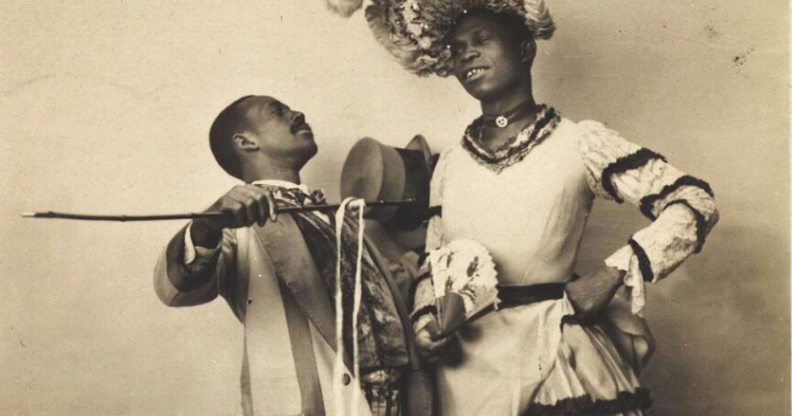Meet the first-ever drag queen – a former slave who ‘reigned over a secret world of drag balls’ in the 1800s

William Dorsey Swann (Getty)
The very first drag queen was a former slave in the 1800s who “reigned over a secret world of drag balls” in Washington, DC, and everyone needs to know about him.
Historical researcher and journalist Channing Gerard Joseph is a former drag queen and professor at the University of Southern California’s Annenberg School for Communication and Journalism. He wrote a book called House of Swann: Where Slaves Became Queens about the incredible life of William Dorsey Swann, who Joseph believes was the very first self-described drag queen.
In a piece for The Nation, Joseph wrote: “Born in Maryland around 1858, Swann endured slavery, the Civil War, racism, police surveillance, torture behind bars, and many other injustices.
“But beginning in the 1880s, he not only became the first American activist to lead a queer resistance group; he also became, in the same decade, the first known person to dub himself a ‘queen of drag’ – or, more familiarly, a drag queen.”
Joseph first discovered Swann in a Washington Post article from April 13, 1888, headlined: “Negro Dive Raided. Thirteen Black Men Dressed as Women Surprised at Supper and Arrested.”
It emerged through other news stories from the time that this was not the first gathering of “men dressed as women” organised by Swann, known to his friends as “the queen”, but it was likely the first time the public and the media were aware.
When the police stormed in that night, Swann tried to stand up to them, and Joseph describes the moment as “one of the first known instances of violent resistance in the name of LGBTQ rights”.
Swann had been born into slavery, like most of the people in attendance at his balls, and had been freed after Lincoln signed the compensated Emancipation Act in 1862.
His gatherings had many similarities to the modern ballroom scene; their community was organised into a family-like structure, led by “mothers” and “queens”, and the drag balls features exaggerated dance moves and dance contests.
His name was William Dorsey Swann, but his friends called him “the Queen.” He'd been forgotten by history until @cgjoseph (JOURN'05) rediscovered Swann, the first self-identified "drag" queen, a former slave. https://t.co/KA4Woc3xNw
— Columbia University (@Columbia) January 31, 2020
The revelation that men had been gathering wearing “female” clothing was shocking and confusing to the public and experts alike. Swann and his friends were described by one psychiatrist as a “lecherous gang of sexual perverts”.
He was falsely imprisoned for running a brothel for 10 months in 1896 after one of his parties, but Swann asked for a pardon from President Grover Cleveland for holding the gathering.
Although his request was denied, Joseph described it as a “historic act”.
He said: “It made Swann the earliest recorded American to take specific legal and political steps to defend the queer community’s right to gather without the threat of criminalization, suppression, or police violence.”
After Swann retired from the drag scene he had created in Washington, DC, his little brother began making costumes for the drag community. He continued until his death in 1954.
Joseph said: “Coming of age at a time when an entirely new form of freedom and self-determination was developing for African Americans, Swann and his house of butlers, coachmen, and cooks—the first Americans to regularly hold cross-dressing balls and the first to fight for the right to do so—arguably laid the foundations of contemporary queer celebration and protest.”

